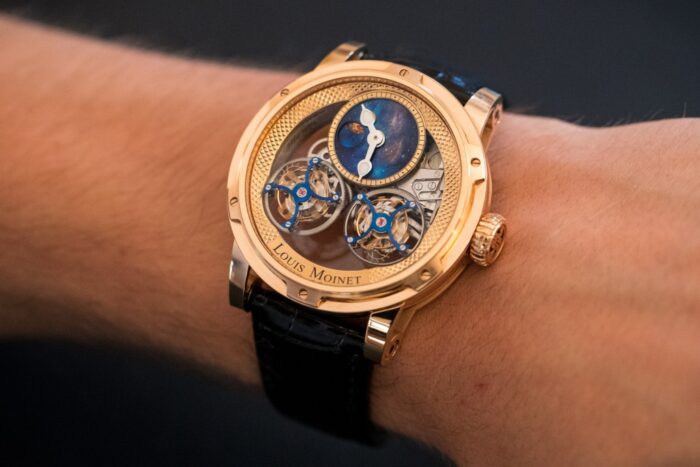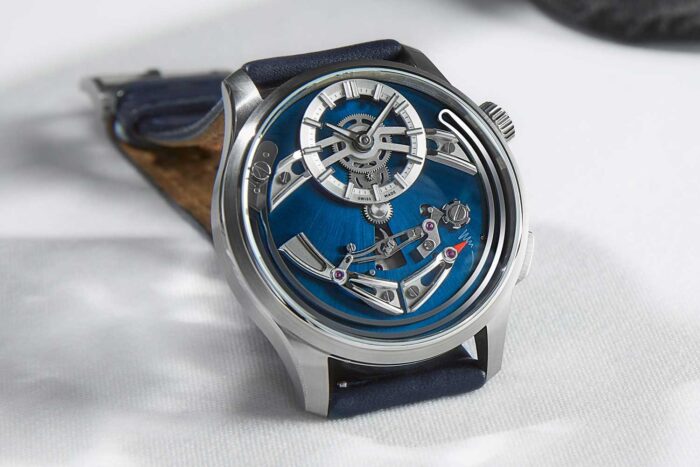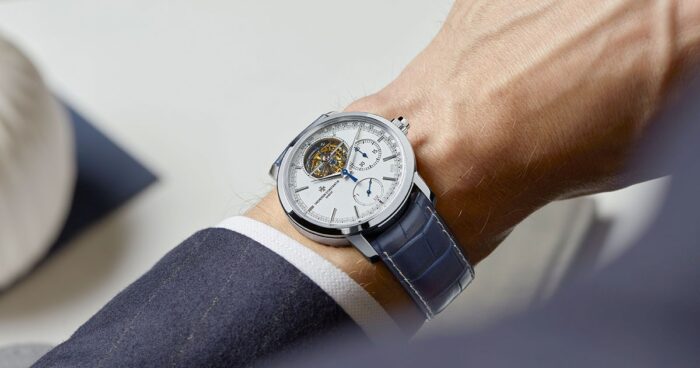
There is a quiet poetry in haute horlogerie. It’s not about flashing wealth or chasing trends. It’s about the devotion to precision, patience, and beauty that has defined fine watchmaking for centuries.
Each piece is a miniature world where tradition, engineering, and art meet. To wear one is to carry centuries of innovation on your wrist.
What Defines Haute Horlogerie

Haute horlogerie is more than just a label; it represents the highest level of craftsmanship in watchmaking. It’s where every component, from the smallest gear to the hand-finished dial, is treated with artistic reverence.
The difference is in the details you don’t see at first glance: the beveling on a bridge, the polish of a screw head, or the depth of hand-engraved patterns.
Among serious enthusiasts of luxury watches, haute horlogerie is viewed as the purest expression of mechanical mastery.
A few qualities typically define a true haute horlogerie piece:
- In-house movements: The brand designs and manufactures its own calibers rather than relying on external suppliers.
- Hand-finishing: Bridges, plates, and components are polished, brushed, or engraved by hand.
- Limited production: Each model is produced in small quantities to ensure quality and exclusivity.
- Complications: Features like tourbillons, minute repeaters, or perpetual calendars are common hallmarks.
The Art Behind the Movement
At the heart of every high-end timepiece lies the movement, the mechanical engine that brings it to life. Building one is a blend of science and soul.
Watchmakers spend weeks assembling hundreds of parts so small they often require magnification to handle. A single misplaced spring or a poorly aligned wheel can throw off the balance entirely.
Consider the tourbillon, an invention by Abraham-Louis Breguet in 1801. It was designed to counteract gravity’s effect on accuracy by rotating the escapement within a cage.
Today, it remains a symbol of pure watchmaking artistry rather than necessity, celebrated for its mesmerizing motion and mechanical complexity.
Movement Finishing Techniques
| Technique | Description | Purpose |
| Geneva Stripes | Parallel stripes polished into metal bridges | Adds texture and visual depth |
| Perlage | Circular graining often applied to base plates | Prevents oxidation and enhances beauty |
| Anglage | Chamfered and polished edges on components | Highlights craftsmanship and precision |
Every technique serves both form and function, contributing to the watch’s resilience and aesthetic harmony.
Case and Dial

While the movement hides beneath the surface, the case and dial tell their own story. Some brands favor minimalist expressions of time, while others embrace ornate artistry, guilloché engraving, enamel painting, or skeletonized layouts revealing the beating mechanism beneath.
Luxury houses such as Audemars Piguet and Vacheron Constantin treat the dial as a canvas. Every brushstroke, engraving line, and jewel setting represents the collaboration between artisans and engineers.
The case, too, plays a crucial role, crafted from materials like platinum, rose gold, or high-grade titanium. It’s shaped and polished by hand to perfection, ensuring it feels both substantial and effortless on the wrist.
The Human Touch in Every Watch
Machines can measure time, but only humans can give it meaning. Haute horlogerie thrives on the personal touch, the imperfection of handcraft that makes each watch subtly unique.
The watchmaker’s bench remains a sacred space, where light, patience, and silence meet in a ritual repeated across generations.
Many master watchmakers dedicate decades to mastering just one complication or technique. Whether it’s a minute repeater’s delicate chime or the seamless dance of a chronograph, the expertise behind each function reflects countless hours of quiet mastery.
Collecting with Purpose
Owning a piece of haute horlogerie is not merely about possession. It’s about participation in a lineage of craftsmanship. Collectors often focus on:
- Provenance: A watch’s history and connection to its maker or previous owners.
- Movement innovation: Unique mechanisms or complications developed by the brand.
- Condition: Originality and the absence of non-authentic parts.
- Aesthetic harmony: Balance between case design, dial layout, and finishing.
Collectors who truly appreciate haute horlogerie often value discretion over display. The emotional return comes from knowing what lies beneath the dial, not just what it signals to others.
Why Haute Horlogerie Still Matters

In an era dominated by digital precision, mechanical watches might seem outdated. Yet haute horlogerie endures because it celebrates the human capacity for perfection in imperfection.
It connects us to an older rhythm, where time was measured not by screens but by balance wheels, gears, and the pulse of craftsmanship.
Each piece becomes a conversation between generations, a reminder that innovation and artistry are not opposites but partners. When the hands sweep across a finely finished dial, they do more than mark time; they honor the devotion of those who built them.
In the end, haute horlogerie isn’t about keeping up. It’s about keeping something alive.














